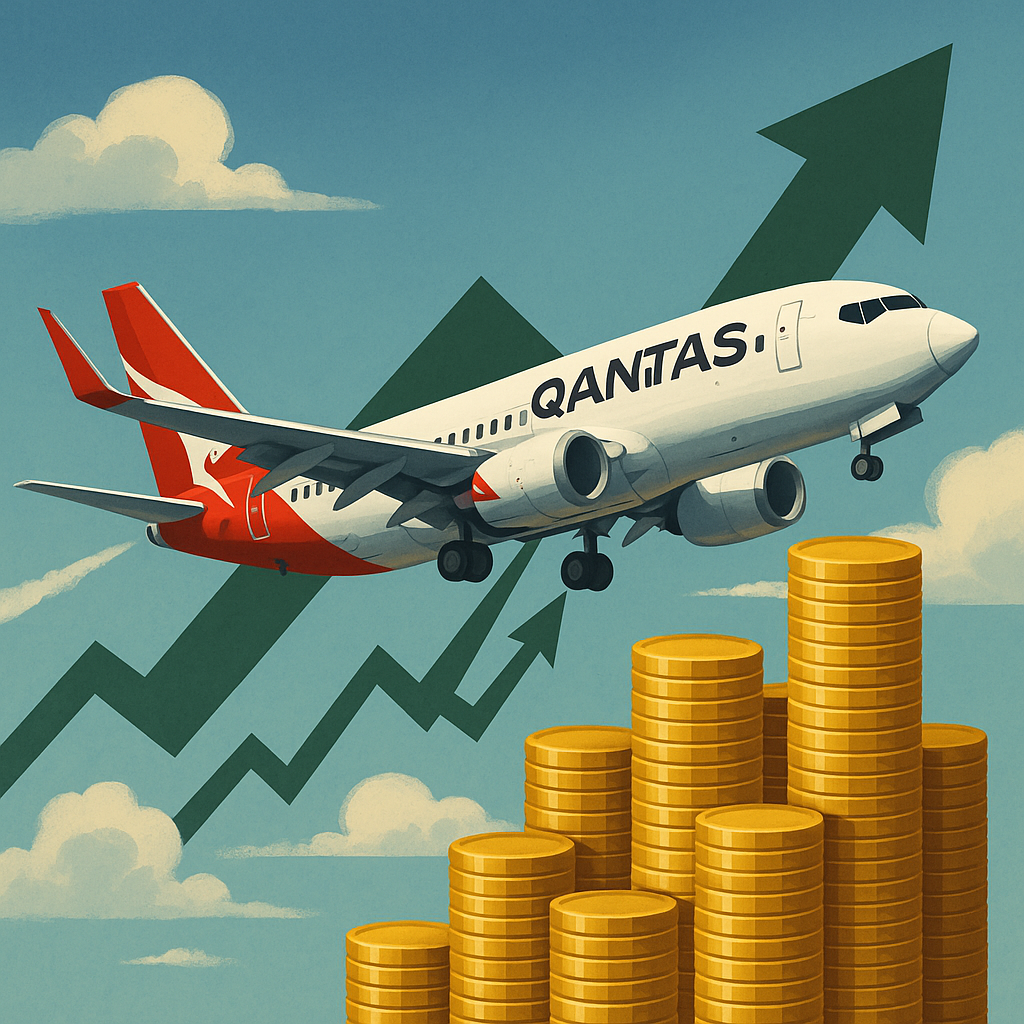Introduction
On May 5, 2025, Qantas Airways experienced a notable surge in its stock price, gaining over 5% and reaching its highest level in a month. This upward momentum came as a direct consequence of a sharp decline in global oil prices. For an airline, jet fuel costs represent one of the most significant and volatile components of operating expenses. When oil prices drop, it creates breathing room for carriers like Qantas, potentially leading to improved margins, better financial health, and, most importantly, greater investor confidence.
The Catalyst: OPEC+ Decisions And The Energy Market Shift
The recent drop in oil prices is closely tied to announcements made by OPEC+ about increasing crude oil output. In early May 2025, the group declared it would raise production by 411,000 barrels per day beginning in June. While the rationale was partly to stabilize prices amid global geopolitical tensions and to address the economic slowdown in several markets, the immediate effect was an oversupply concern that pushed prices down.
Brent crude fell below $60 per barrel—a level not seen in several months—triggering a wave of optimism in fuel-dependent industries, particularly aviation. For Qantas, this translates into a sharp decline in the price of jet fuel, often pegged closely to crude benchmarks. With less money spent on fuel, Qantas gains more flexibility in route planning, pricing strategies, and revenue management, which in turn excites investors.
Qantas Airways: Strategic Positioning In A Volatile Market
Qantas is not just any airline; it is Australia’s flagship carrier and a dominant force in the Asia-Pacific aviation sector. Over the years, the company has undertaken various initiatives to streamline operations, improve customer satisfaction, and maintain a strong balance sheet. During the COVID-19 pandemic, Qantas suffered severe setbacks but was among the quicker global carriers to rebound, thanks to effective government collaboration and strategic capacity planning.
This background sets the stage for Qantas to benefit immensely from favorable market developments such as falling fuel prices. When external costs decline, well-managed airlines can quickly capitalize on the gap by converting savings into profit or competitive pricing advantages. Qantas, which has recently expanded international operations and added new destinations in Asia and North America, is perfectly positioned to do just that.
Investor Reaction And Market Movement
Investors were quick to respond to the fuel cost news. On May 5, Qantas stock surged by over 5%—a significant move for a mature, large-cap company. The rally was driven by several factors:
Cost Optimization Prospects: Lower jet fuel prices can improve Qantas’ operating margin by up to 3–5%, depending on the hedging structure and duration.
Increased Travel Demand: Falling oil prices often lead to lower ticket prices, which can stimulate travel demand—particularly in price-sensitive domestic and trans-Tasman markets.
Improved Earnings Outlook: Equity analysts upgraded Qantas’ short-term earnings expectations, boosting investor sentiment.
Sector Rotation: Global investors moved funds into airline and transport stocks, anticipating a cyclical upturn amid lower energy costs.
How Falling Fuel Prices Impact Airlines Financially?
Fuel costs typically account for 20% to 30% of an airline’s operating expenses, second only to labor. A drop in fuel prices can therefore have a disproportionate impact on net profits. Airlines like Qantas often hedge fuel prices months in advance to avoid volatility, which means the full benefit of declining prices may take a few quarters to materialize—but the sentiment shift among investors happens much faster.
Additionally, lower fuel costs provide airlines the opportunity to either reduce fares to increase market share or maintain pricing and boost margins. In practice, many carriers strike a balance, optimizing revenue without triggering fare wars.
Long-Term Strategic Benefits For Qantas
1. Capacity Expansion
With reduced fuel costs, Qantas may revisit plans to expand capacity across high-demand international routes. The airline has already announced new services to Tokyo Haneda, Dallas-Fort Worth, and Bangalore. These long-haul routes are particularly sensitive to fuel costs, and the current pricing environment may accelerate deployment.
2. Fleet Renewal
Qantas has been investing in fuel-efficient aircraft like the Airbus A350 and Boeing 787. The current energy environment strengthens the case for replacing older, fuel-hungry planes. Lower costs also free up capital for such investments.
3. Loyalty Program Growth
With more disposable income and cheaper tickets, travelers may increase frequency, indirectly boosting Qantas’ lucrative loyalty business, which includes partnerships across banking, retail, and telecom sectors.
Competitive Landscape: Qantas Vs Regional Rivals
The Asia-Pacific region is one of the most competitive aviation markets in the world, with regional players such as Singapore Airlines, Cathay Pacific, and Air New Zealand vying for dominance. Qantas’ ability to respond swiftly to fuel price changes gives it an edge, particularly on routes where it already commands strong brand loyalty.
Moreover, Qantas’ domestic monopoly through its Jetstar subsidiary allows it to cross-subsidize international operations if needed. The falling fuel prices may also reduce pressure from budget carriers, who depend more on volume and low-cost structures. While rivals benefit as well, Qantas’ scale and network give it a more resilient platform.
Challenges And Cautionary Considerations
Despite the optimism, several risks remain:
Fuel Price Rebound: OPEC+ policies are volatile, and geopolitical shocks can quickly reverse the downward trend in oil prices.
Macroeconomic Slowdown: Lower oil prices may be a symptom of global demand concerns, which could dampen international travel.
Currency Fluctuations: A weaker Australian dollar could erode some of the gains from falling fuel prices if procurement is done in USD.
Regulatory Oversight: Increased scrutiny on emissions and sustainability may push Qantas to reinvest savings into green initiatives, delaying shareholder returns.
Investor Takeaway: A Short-Term Pop Or Long-Term Trend?
Qantas Airways’ 5% stock surge is more than just a reaction to oil price news—it reflects a broader shift in market expectations. If fuel prices remain low and travel demand stays resilient, Qantas could be entering a golden phase of margin expansion and balance sheet repair. For long-term investors, this scenario offers compelling upside, particularly if Qantas continues its trajectory of strategic discipline and operational excellence.
However, prudent investors must remain vigilant about external risks. Airline stocks are notoriously cyclical, and while Qantas is among the best-managed carriers globally, it cannot fully shield itself from macroeconomic volatility.
Conclusion
Qantas Airways is flying high, propelled by favorable fuel price dynamics and a cautiously optimistic outlook for the global travel industry. The May 5 rally marks not just a positive day on the trading floor but also a validation of the airline’s resilient business model. As the energy markets evolve and travel patterns stabilize post-pandemic, Qantas appears well-positioned to capture value for shareholders while continuing to serve as Australia’s aviation leader.
In the weeks ahead, much will depend on how oil markets stabilize and whether geopolitical risks stay contained. For now, the skies seem clear, and Qantas is making the most of its tailwinds.


